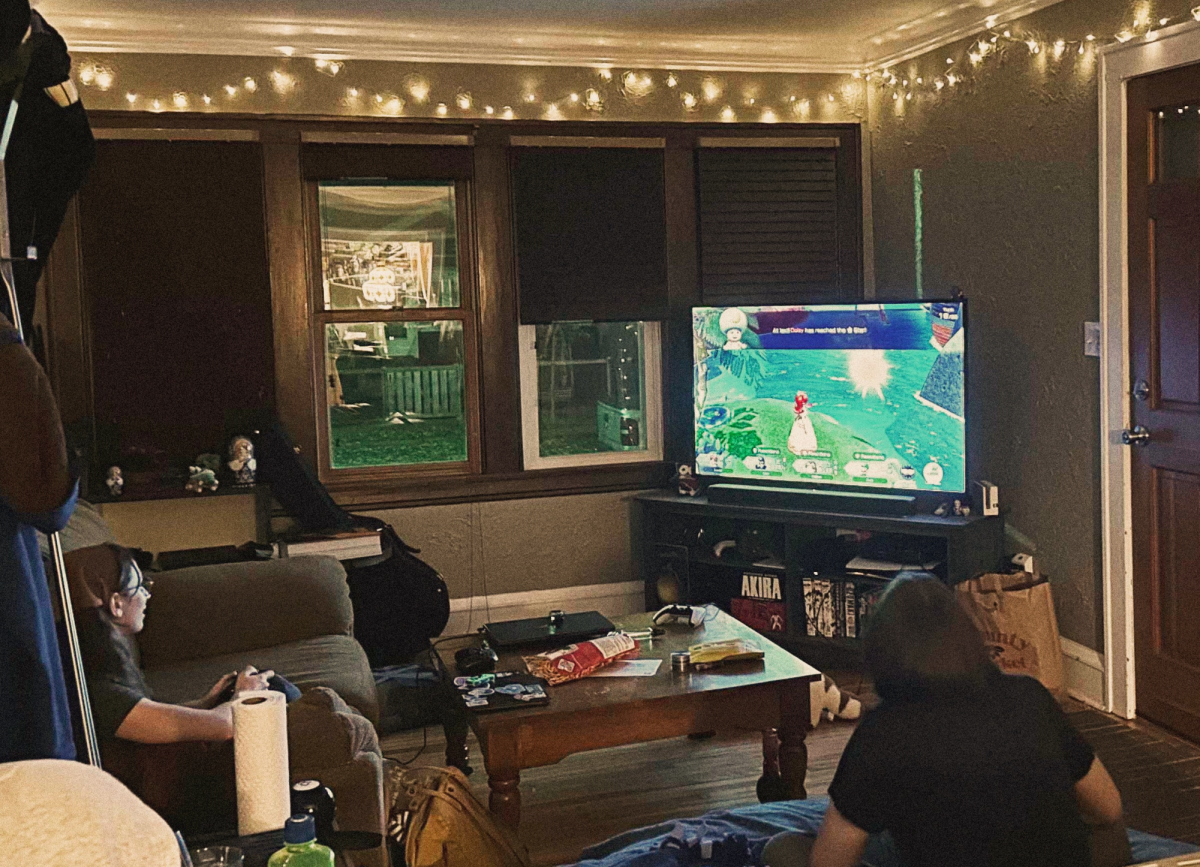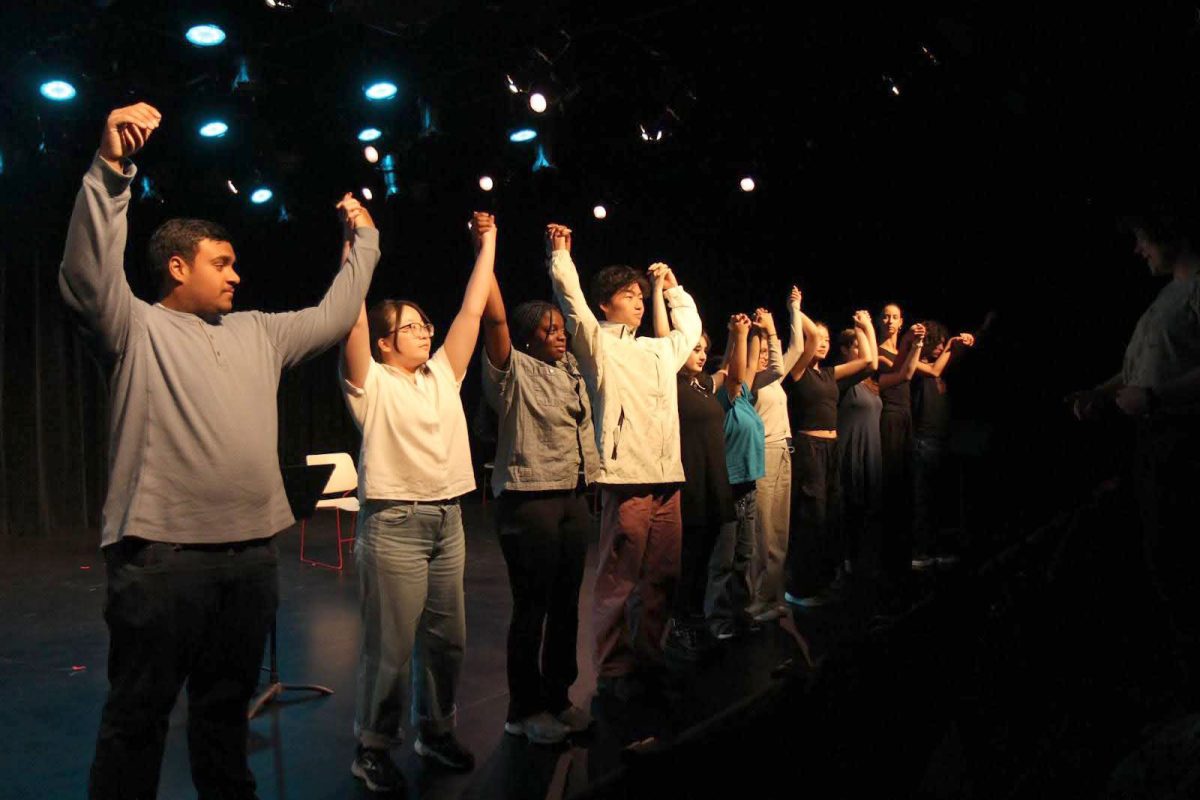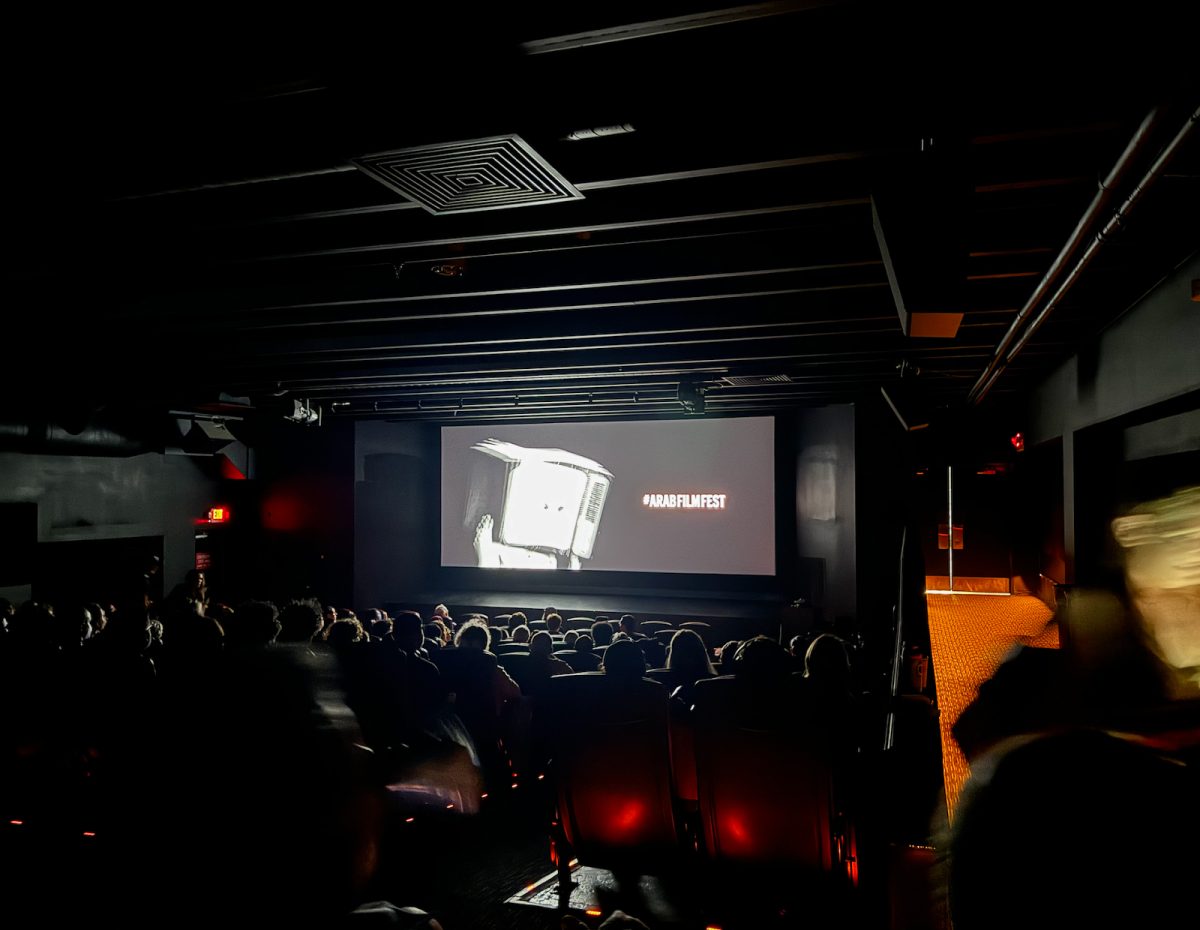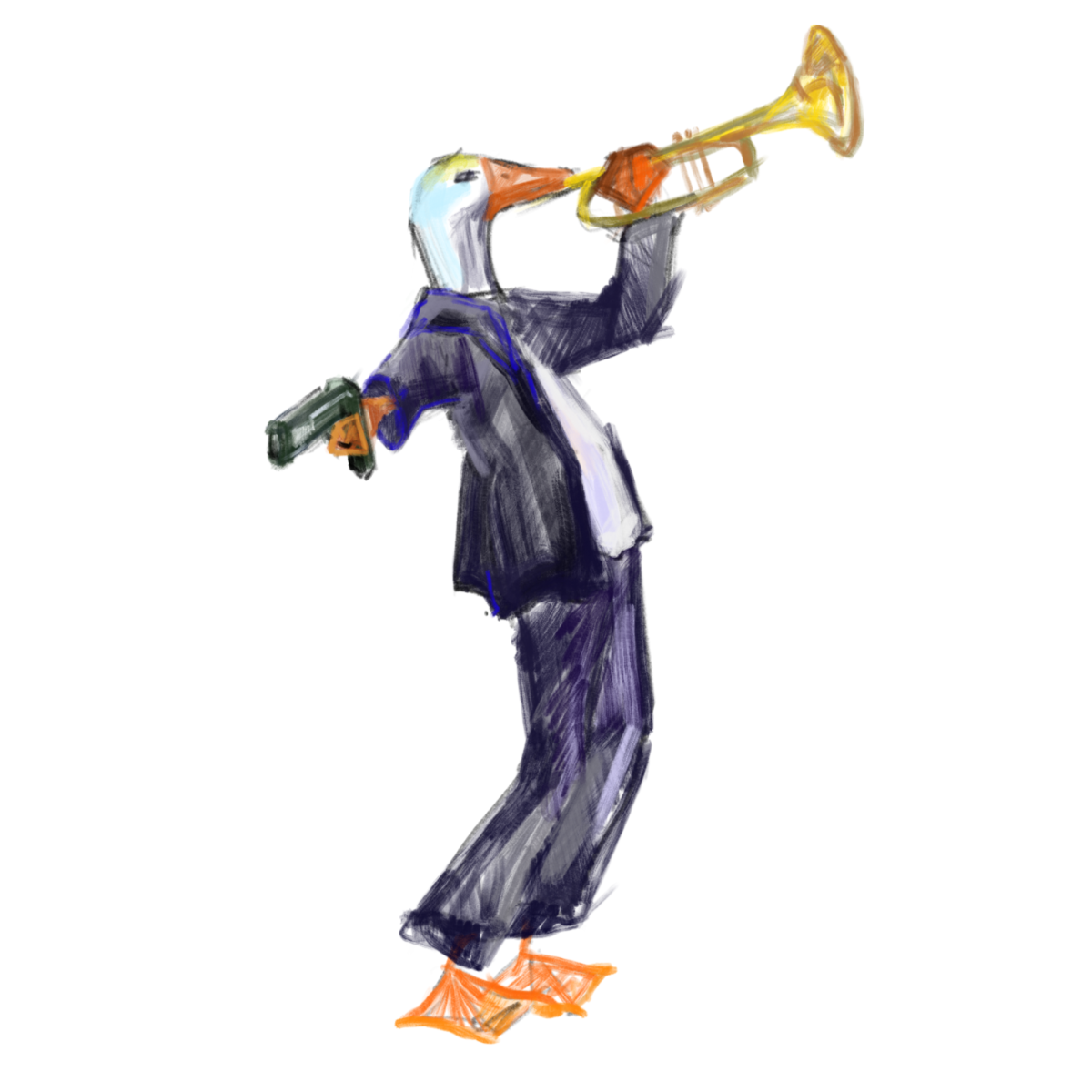After three long years, a new installment in the Mario Party franchise, Super Mario Party Jamboree (SMPJ), was released on Oct. 17, 2024. Mario Party is a video game where players move across a virtual board to collect the most stars. A game has four players taking turns rolling dice to move, with a minigame for coins (which are used to purchase stars and items) at the end of each round. While moving along, one can land on many different kinds of spaces; blue spaces give coins, red spaces take coins, event spaces make something unique to each board happen, Bowser spaces cause a random disadvantage and lucky spaces cause a random lucky effect, to name a few.
As both a video and board game fan, I knew I had to get it. But is the $59.99 price point worth it? My boyfriend Zach and I went on a journey, playing as many minigames and modes as possible, to create our comprehensive review of each part.
Classic Game Mode
The best place to start is with the classic Mario Party. This mode can be played with up to four players online or locally, substituting in non-player characters (NPC) as needed. SMPJ introduced five brand-new boards alongside two revamped ones from earlier games. Each board has its charms and quirks that make it a new experience.
The easiest place to start both in-game and this article, is Mega Wiggler’s Tree Party (which features, you guessed it, a Mega Wiggler hanging out in the middle). You can walk along its back for a shortcut, but know that at any point another player could use this board’s unique item – the Wiggler Bell – or land on an event space to wake up Mega Wiggler and make them move, changing your shortcut into an even longer path.
My favorite board (thus far) is Rainbow Galleria, though I don’t recommend starting with this board based on its complexity. Based on a mall, Rainbow Galleria features escalators and an elevator to allow movement between floors. There’s a multitude of shops, most of which are accessed only by event spaces, a lottery and flash sales for cheaper items. There are also stamps for your Koopa Troopa stamp card that grant you coins when you turn it into the Koopa Troopa on the first floor.
On the other end, the least exciting board, in my opinion, is Roll’em Raceway, whose entire gimmick is “drive fast.” Here, you get increasing amounts of coins for completing laps around the track. However, the star can only spawn in two locations, always alternating. The map is especially painful for those of us who are chronic low-rollers, and the Turbo Dice, this board’s unique item that allows the player to roll four dice at once to move quickly, doesn’t stop for anything – star included.
The other two new boards are Goomba Lagoon, which features a volcano that starts erupting during the game, and King Bowser’s Keep, a board that continues to get more unlucky as an Imposter Bowser adds more Bowser spaces onto the boards and roams around, threatening players. Finally, longtime fans of the franchise will recognize Mario’s Rainbow Castle and Western Land as two returning boards from Mario Parties One and Two respectively.
Also returning is the concept of allies, renamed Jamboree Buddies, from Super Mario Party. These buddies only stick around for three turns and offer bonuses to the player whose buddy they are. Buddies are gained by running into them on the board and then playing a longer minigame, fighting for their hand. Be warned, though: if another player passes you when you have a buddy, they’ll take your buddy from you.
Pro Rules
SMPJ also introduces a new rule set for the classic game mode: pro rules. These strip the game of as much randomness as possible. In classic rules, landing on a lucky space spins a wheel, granting a random thing to the player, like coins or an item. However, in pro rules, lucky spaces allow only a choice between gaining ten coins or a double-dice block item. Additionally, Boo, who usually steals 10-20 coins, will always steal 15 coins and Bowser spaces will always result in losing a star. Games using pro rules are also fixed at 12 turns and give each player an item of their choice at the start, contrary to classic rules that allow a choice of 15, 20, 25 or 30 turns and no item.
The two most interesting changes, though, are the limited stock of items in the shop(s) and the reveal of the bonus star at the beginning of the game. Each item can only be purchased twice across all players. Bonus stars – two random stars given at the end of the game for things like landing on the most total lucky spaces or winning the most minigames in classic rules – have the long-held reputation of causing wild upsets in the final standing, but pro rules eliminate that by revealing the one and only bonus star at the beginning of the game, so you can strategize around it.
Pro rules have been divisive since the game’s release nearly a month ago, however I believe much of that is just because of humans’ inability to accept change. Pro rules add an interesting twist to a much-beloved game; if you really don’t like them, just don’t play them.
Minigame Bay
Minigame Bay is a game mode that allows you to play (almost) all of the available minigames. There are multiple categories of minigames including 4-player, 1 vs. 3, 2 vs. 2, duel, motion and more. There are a total of 112 minigames, though only 53 of these are available as minigames during a classic game, and only 43 are available if you play with motion minigames turned off. For this Mario Party having the most minigames ever, this number is a little disappointing, as after playing even a few rounds of classic mode you’ll have played most of the available minigames. The other minigames are each from one of the other game modes.
Although, for the first time in a long time, Nintendo did a great job of creating new minigames and picking some older ones to curate one of the best sets of minigames in a Mario Party. My favorite minigames from the classic 53 are Camera Ready, a 4-player minigame with the goal of replicating a provided photo in a plaza while toads, Koopas and more are running around and Cookie Cutters, a 1 vs. 3 minigame about cutting out different shaped cookies in order. I also have enjoyed the quiz-based games like Big-Top Quiz and Thwomp the Difference.
Minigame Bay is also where you can play all of the showdown minigames, the four-player minigames for buddies. These can otherwise be hard to play during classic games as you may not get a chance to run into one of the buddies on the board or they may never show up if you play as one of the possible buddies, like Luigi and Daisy as my boyfriend and I do.
Additional Motion Minigames
There are three locations with varying long-form minigames. In Rhythm Kitchen, which seems to be Nintendo’s answer to cries for a new Rhythm Heaven game, players can indulge in a number of Rhythm-based games, all themed around food. You can play with up to four players collaboratively, but luckily, if you play with NPCs, they will always score perfectly, so as to not affect your score at all.
A level-based puzzle game, Toad’s Item Factory is played with motion controls where the goal is to move balls to the end of a series of moving platforms. Once you complete three puzzles, the balls combine to make a collectible of an item from the classic game. This game can be played alone, where you hold two joy-cons to control two different colored platforms, with two players or with four.
Paratroopa Flight School is the last of these and is also a series of motion minigames. Each player requires two joy-cons, one for each hand, and adequate standing room to physically move your arms around and make the on-screen characters fly. We found Paratroopa Flight School to be the least enjoyable of these additional minigames, partially because of the flapping around.
Kaboom Squad
Kaboom Squad is a single-player per Nintendo Switch game mode that pairs eight players if you’re online or substitutes in seven NPCs to fight against Imposter Bowser. During a round, you go around breaking crates to find bombs and bring them back to the cannon to fire at Bowser and deal damage. Between rounds, you play collaborative minigames, and, depending on your team’s ranking, you can get items to aid in your fight.
Koopathon
Koopathon is similar in player structure to Kaboom Squad, although it has 20 people competing in a race. In a game, you move spaces by getting coins in the coin minigames. Each minigame is single player so you aren’t dealing with online lag since 20 consoles are all trying to communicate with each other or collisions between the characters. At the beginning of a race, three minigames are randomly chosen that will repeat until the race is over. However, between each cycle, everyone plays a Bowser minigame that’ll send you backward if you lose depending on what place you’re in before the minigame. Zach and I both really enjoy this game mode and will often play swapping out depending on which minigames are chosen, as he’s far better at some than I am and vice versa.
Reactions/Stickers
It would be completely criminal to talk about SMPJ and not mention the reactions. Reactions were introduced in Mario Party Superstars to be used in online play as a way to communicate with other players during a game if you don’t have an external voice chat. In Superstars, there are 67 total, including unique “Hi!” “Yes!” and “Whaaat?!” stickers for each playable character. SMPJ has 109 stickers, now called reactions, also including three for each playable character. SMPJ now allows you to access all of your stickers during a game, not just the ones you choose beforehand as it was in Superstars, and allows you to change your four shortcuts for easy access to your most used stickers.
Final Comments
Overall, this newest installation in the Mario Party franchise is one of the best in a long time, potentially the best ever. There are some shortcomings, like the number of minigames actually available during a game, but overall, the sheer number of things to do absolutely make the $59.99 price point well worth it.
• sdunning@ macalester.edu













